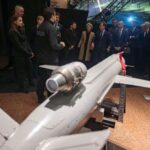
The Senate Armed Services Committee (SASC) would like to increase the number of F-35 Joint Strike Fighters procured in its markup of the fiscal year 2021 National Defense Authorization Act (NDAA), and keeps with previous authorization bills in limiting the amount of legacy aircraft the Air Force can retire. The Defense Department requested 79 F-35s across the services in its FY ’21 presidential budget request, including 48 Air Force F-35As, 10 Marine Corps F-35Bs and 21 Navy F-35Cs. SASC members…

 By
By 











